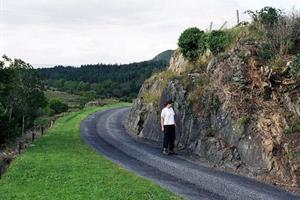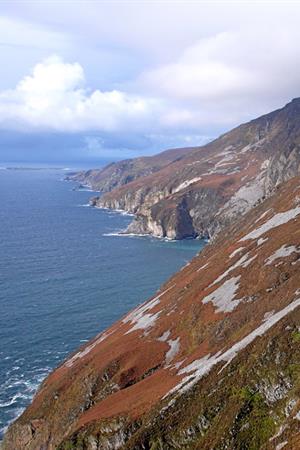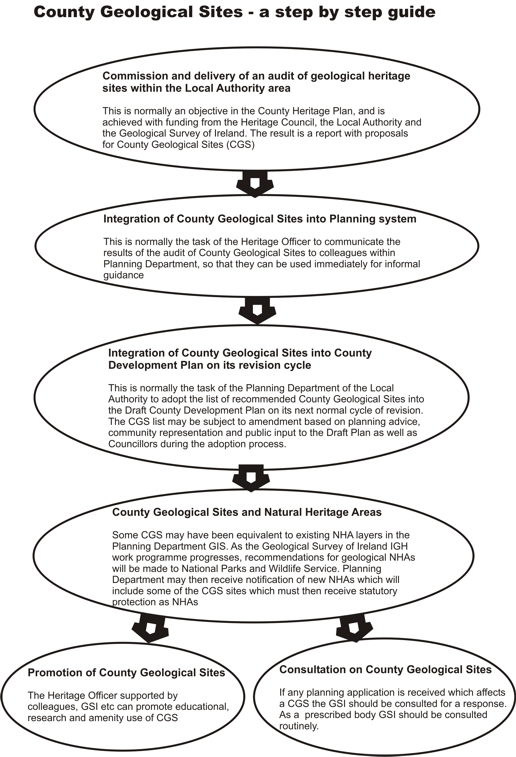Sites are assessed on their own merits under each thematic network. Sites that are appraised, but which are not selected for Natural Heritage Area (NHA) designation, are classified as 'County Geological Sites' (CGS), as recognised in the National Heritage Plan (2002). This enables their integration into county development plans.
All sites of geological heritage importance are currently classified as CGS until such time that the most significant sites can be designated as geological NHAs. Until the National Parks and Wildlife Service act upon Geological Survey Ireland's recommendations and undertake due legal process in advertising and consulting with landowners on their intention to designate, there is no national legislative basis to the 'sites' documented here (excepting those which happen to be within existing designated National Park, Natural Heritage Area or Special Areas of Conservation (SAC). The CGS status within County Development Plans does however give a protective framework within the planning process.
It should also be noted that all sites described and recommended, except those in state ownership through the National Parks and Wildlife Service, are the property of private landowners. No site description is an invitation to access or to visit the sites without permission from the respective landowner.
Natural Heritage Area - Site selection criteria
 Given the numerous constraints and pressures on land, the Geoheritage Programme has to fully justify on scientific grounds all sites selected and proposed to NPWS for NHA designation. In line with the international developments in earth science conservation generally, Geological Survey Ireland has developed a rationale and methodology for the Geoheritage programme, which will serve as the basis for all themes.
Given the numerous constraints and pressures on land, the Geoheritage Programme has to fully justify on scientific grounds all sites selected and proposed to NPWS for NHA designation. In line with the international developments in earth science conservation generally, Geological Survey Ireland has developed a rationale and methodology for the Geoheritage programme, which will serve as the basis for all themes.
The fundamental basis of the programme is to select the minimum number of sites required to demonstrate our current understanding and knowledge of earth heritage as recorded in Ireland's rocks and landforms. The minimum number of sites, and minimum area of each site, is to ensure that only land of high scientific value is included within designated sites. By maintaining the sites of bona fide national importance, the integrity of the Programme is maintained and will be sustainable in the long term.
Three criteria will be used in determining the primary selection of appraised sites for possible NHA status. A site must meet one or more of these criteria. They are:
Representativeness
These sites should be characteristic or typical of the theme as a whole and its diversity. For each theme, a minimum network or framework of sites shall be selected to display and represent the entire geological or geomorphological interest of the theme.
Exceptional Features
These sites will be selected for their exceptional status, including particularly spectacular features within the network of a theme, or for rare, remarkable or unusual characteristics which are not typical, but which amplify the coverage of other sites.
International Importance
As well as a nationally representative network of sites to demonstrate a theme, any sites recognised as of international importance to the geological or wider community are likely to be designated after appraisal.

Sites have also been considered in terms of whether they are exposure or integrity sites. In this programme, exposure sites are those where a single feature or entity is identified or a good representative example of a wider rock formation. These sites normally demonstrate only the one aspect of the theme. Integrity sites are those where a geological or geomorphological system is viewed as a whole, or where the site demonstrates a good range of features of the theme within one area.
As there will almost certainly be some themes where a number of sites meet the criteria for selection as NHAs, especially in the 'representative' category, secondary sorting will be required to discriminate, and select the best. In the first instance, any site must be able to be conserved in a practical sense. For example, if a site is actively, but legitimately (i.e. through quarrying or permitted development) being destroyed as appraisal is conducted then selection of an undisturbed equivalent site would be the preferred choice.
There should also be a minimum of duplication of scientific interest between sites. A prioritised list of sites recommended for NHA designation should use the following factors to 'weight' sites for discrimination, especially amongst the representative sites:-
Preference should be given to:
- sites with an assemblage of characteristics or features i.e. integrity sites, rather than exposure sites.
- sites with the most complete record of the features of interest, i.e. those which are more intact or undamaged, or 'natural' in the case of geomorphological sites.
- sites with a good history of study or research.
- sites with future research potential.
- sites which have yielded results with a wider significance beyond the thematic interest. This could include archaeological, historical, ecological and/or cultural parameters.
The following chart describes the role of the local authorities and the Heritage Council in auditing sites of geological importance, and their subsequent protection and promotion.
